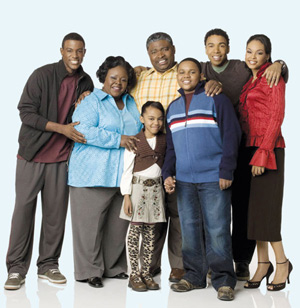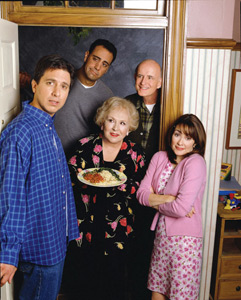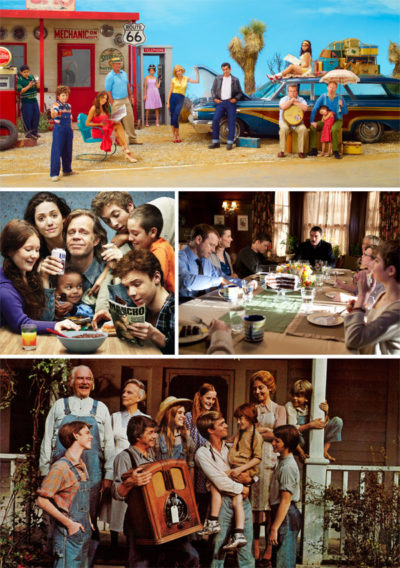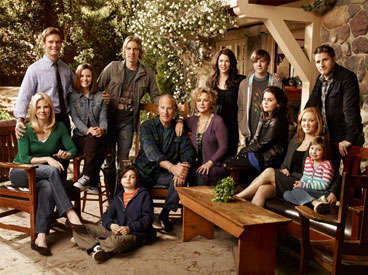
So, if we’re all going to share, will we be able to get along? It may surprise you that not only is the answer an emphatic yes, but the multi-gen household may yield unexpected benefits, from sharing chores and childcare to the more abstract but equally vital opportunity to really get to know one’s cultural history. In fact, according to Graham, the nuclear family concept wasn’t ever that terrific in the first place: “We’re not designed to live that way. We’re designed to thrive in extended family units,” he says.
“Having grandparents around provides a richness and a deeper dimension to children’s lives,” adds Nancy K. Schlossberg, author of Revitalizing Retirement: Reshaping Your Identity, Relationships, and Purpose. “When grandparents are living in the house, the grandchildren will hear and know things about the family that they wouldn’t have if they lived hundreds of miles away.”
Karen Xu immigrated to America from China in 1991 and became a U.S. citizen. For her, America meant new opportunities, but she didn’t give up cultural traditions when she crossed the Pacific to live in San Jose, California. A few years after settling here, her parents moved in with her and her husband, Peter Ha. “In China, parents would always stay with one of their children,” Xu says. “That way, we’re available to take care of them. It’s a time where we can be with them and do some nice things for them.”
More than one-quarter of Asian families in the United States live in multi-gen households, and the numbers are similar for African Americans and Hispanics, according to the Pew Research Center. In 2009, 16.2 percent of foreign-born heads of household lived in multi-gen households.
Because Xu’s parents lived with the family, they had a chance to become close to their grandchildren. The bond they formed helped bridge cultural and generational gaps. The grandchildren live in a world of texting and YouTube videos, and grandfather Zhang Jir Xu, 75, and grandmother Shi Ming Ruan, 69, had much to learn about their new country. “My children have respect for their grandparents, and appreciate stories about how they grew up,” Xu says. “I want them to see how I treat my parents and be a good example for my kids.”
As her children grew into their teens, Xu realized that they’d need more space. So, her parents moved in with her brother, who lives nearby. But taking care of her parents is still a family affair. Every Monday, Xu visits her parents. And because the grandkids are driving now, they can help take their grandparents to doctors’ appointments, too.

Now, her parents have adapted to American life in some small, touching ways. “In China, it’s a custom that parents don’t tell their children how they feel about their children,” she says. “But after living here, my parents have told me how proud they are of me. That just means so much.”
For some, let’s remember, joining a multi-gen household isn’t a choice, but a necessity. With job losses and a tough economy, family members have had to move in with each other. And that may force families to be creative with financial and chore arrangements.
Before moving in together, family members should figure out what kind of space and other physical accommodations need to be made. For example, in one family, the laundry room was moved to a first-floor space so a grandmother wouldn’t have to walk up and down stairs and stress her sometimes achy knees. Other families may need to install stand-up showers or grab bars in the bathroom and switch hard-to-twist doorknobs out for lever handles.
Another key issue is privacy. Sharon Graham Niederhaus, co-author of Together Again: A Creative Guide to Successful Multigenerational Living, recommends separate kitchens and entries for the different generations living under one roof. Sometimes that’s not possible, which means it’s essential to establish rules and boundaries if you wish to inhabit a peaceful household.
Money is often the trickiest consideration. As a guiding principle, each household member should contribute according to ability. “If you can’t contribute financially to the household, cut the lawn, do the dishes, or fix meals,” says Schlossberg.
Best to work the finances out beforehand. When Cathy Tankana, 66, retired and moved from Hawaii to California to live with her son, daughter-in-law, and their two daughters, she used her savings to contribute to the down payment on her son’s home—and her name is on the title as co-owner. They agreed in advance to divide all costs, from mortgage payments to utilities 75-25 (where Tankana pays the 25 percent share). She also helps out by baby-sitting a few times a month. And they agreed to share in preparing and eating meals together several days a week.
It’s all about planning. “Like having roommates when you were in college, you have to figure out how to live together,” Graham Niederhaus says. “You have to be aware and handle conflict, ideally before it occurs.”
On the positive side, there are plenty of special moments—connections across the divide of generations—that will never be forgotten. Tankana relates the story of her youngest granddaughter, Leighton, being briefly hospitalized this past winter. “I told my son and daughter-in-law not to worry,” says Tankana, who volunteered to pick up her older granddaughter, Skylar, from school. “When I got there, I explained to Skylar that her sister was in the hospital, but she was going to be fine, and that today it was going to be ‘just you and me.’” Tankana beams when she shares six-year-old Skylar’s response: “We’re going to have our own day together. This is gonna be fun!”

All in the Families
What TV tells us about the multi-gen family.
Like an LED-powered mirror, television reflects our culture. Click through the channels and you’ll see plenty of shows with storylines that follow multi-gen households.
On ABC, Modern Family chronicles three slightly dysfunctional multigenerational families as they deal with kids, everyday stresses, and, um, flying pumpkins. Over on NBC, the families of Parenthood contend with adult kids moving back into their parents’ house and the stresses of having to make ends meet. Showtime’s Shameless gives a glimpse into an unseemly multi-gen household where the kids often keep the irresponsible adults in line. And on CBS, Blue Bloods tells the story of a family with several generations of New York City police officers.
Ken Tucker, the TV critic for Entertainment Weekly says the interaction between TV family members makes for compelling viewing. “Every single episode of Blue Bloods contains a family dinner,” Tucker says. “That’s the heart of the show and what draws people in.”
Multi-gen TV is nothing new. On The Waltons, everyone from Grandpa to little Elizabeth wished John-Boy goodnight. Despite Frasier and Niles being psychiatrists, their gruff, live-in father sorted out sibling rivalries on Frasier. Sanford and Son , squabbled constantly, but there was always love underneath the fussing. And, of course, boomer-baby Meathead found himself in continuous philosophical disagreement with old-school Archie in All in the Family.
These shows are fun, but not necessarily educational: “TV families don’t usually deal with the complexities of real life,” says John E. Northman, an Amherst, N.Y., clinical psychologist who specializes in family and relationship issues. “And resolutions to actual family issues don’t happen in 30 minutes.”
Become a Saturday Evening Post member and enjoy unlimited access. Subscribe now



